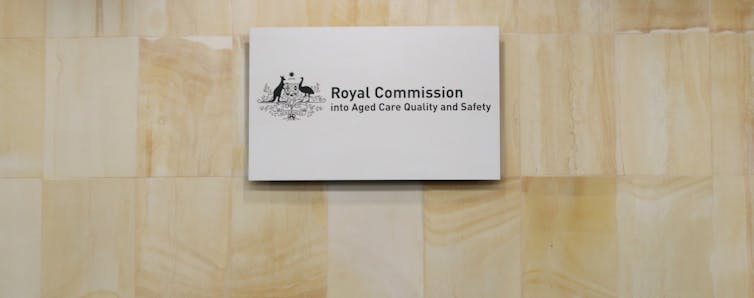The budget must address aged care — here are 3 key priorities
- Written by Stephen Duckett, Director, Health Program, Grattan Institute
Australia’s aged care system has produced a litany of failures: unpalatable food, poor care, neglect, abuse and, most recently, the tragedies of the pandemic.
This should not come as a surprise. Poor regulation has taken the “nursing” out of “nursing homes” and allowed care funding to leach into provider profits. Older Australians have been pushed out of sight and out of mind. The result is an aged care system that is underfunded, poorly regulated, and often unable to give older Australians the support they need to live meaningful lives.
More money is necessary but not sufficient. The aged care system needs to be redesigned, throwing out the current market-driven, provider-centric approach.
The 2020-21 federal budget, to be unveiled October 6, should include an aged-care trifecta: expansion in home care, greater transparency, and a rescue package. The ultimate goal should be a dramatically different aged care system which is more attuned to supporting the rights of older Australians.
Read more: Our ailing aged care system shows you can't skimp on nursing care
1. A right to home support
The vast majority of older Australians who need care and support want to receive it at home, yet the system cannot deliver. Instead, older Australians face unacceptably long waiting times.
This means people who need support are left with limited choices. About 100,000 people are currently waiting for a home-care package, often for more than a year. They regularly end up in residential care. A new aged care system should create a right to home care.
 Many elderly people who need care would prefer to receive it at home, but lengthy wait times often force them into residential aged care.
Shutterstock
Many elderly people who need care would prefer to receive it at home, but lengthy wait times often force them into residential aged care.
Shutterstock
A senior official of the Commonwealth Department of Health estimated the cost of meeting the backlog for home care at $2 billion to $2.5 billion a year, in evidence before the Royal Commission on Aged Care.
But more money for home care isn’t sensible without reforming how it’s used. Administrative costs are far too high, and much of the funding allocated for home care has not been used because people didn’t need all the money allocated to them.
While the expansion of home care is being phased in, government should work on system redesign so the new arrangements can be individually tailored to the needs of the older person. The estimated $1 billion allocated but not spent can be used on actual service delivery.
Access to packages should be dramatically streamlined so people get the care they need much more quickly. Administrative costs should be reduced, and the maximum amount of care hours able to be provided in the highest level home care package should be increased. This would enable more people to stay at home rather than be admitted to residential care.
Improved accreditation of home-care providers should also weed out high-cost, low-value providers, so older people and taxpayers get better value for money.
2. Increase transparency and accountability
The current aged care system uses the language of the market and choice. In practice, providers have much more information, control, and influence than consumers. In residential care, a veil of secrecy makes it very difficult for consumers to make judgements about key quality variables such as staffing levels.
Research for the Royal Commission applied a United States’ ranking system to Australian residential aged care facilities and showed only a minority of aged care providers have staffing levels at three stars or above in a five-star rating system.
Australia does not have such a ranking system so potential consumers are not let into the secret of who is good and who is not. Nor does high profit necessarily equate to high quality.
 If the United States’ five-star aged care rating system was applied here, over 50% of Australian providers would rate just one or two stars.
Kelly Barnes/AAP
If the United States’ five-star aged care rating system was applied here, over 50% of Australian providers would rate just one or two stars.
Kelly Barnes/AAP
Consumers need much better information about quality and outcomes so they can choose which services to use. The protection racket that has stopped older people learning about the performance of home-care and residential care providers needs to end.
3. A rescue package for residential aged care
The pandemic has highlighted the fatal flaw in residential aged care regulation —no one is accountable for ensuring there are enough qualified staff to look after residents.
Research for the Royal Commission has identified 11% of aged care facilities are of really poor standard — more complaints, failing standards more often, and poorer clinical outcomes. Residents in these facilities deserve better.
The federal government should set up a $1 billion rescue fund to lift the standards in these low-performing facilities. The government should require those facilities to produce a recovery plan by December 31 2020 outlining how they propose to get there by the middle of next year.
The rescue fund should be used to make sure the plans are implemented. Access to the fund should be tightly scrutinised so the money goes to upgrading staffing, and not to greater profits for wealthy owners.
If providers can’t implement their rescue plan successfully, they should transfer management to a group that can. Over the next 12 months, a new funding and regulatory system should be designed to ensure facilities providing such poor care can’t continue to operate.
Authors: Stephen Duckett, Director, Health Program, Grattan Institute
Read more https://theconversation.com/the-budget-must-address-aged-care-here-are-3-key-priorities-146678





